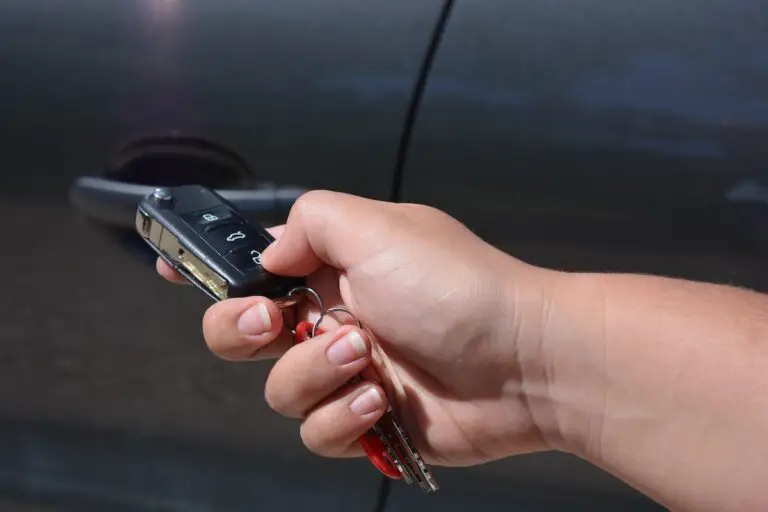Car AC Compressor Running But Not Cooling? [Here’s Why!]
The AC system on a car is responsible for blowing cool air into the cabin. One of the main components of the AC system of a car is the compressor. In this article, I will explain why the AC system in a car is not cooling even though the AC compressor is running.
Generally speaking, if your AC compressor is running but not cooling, the compressor clutch, coil, or both have likely failed. Other causes include refrigerant needs refill, refrigerant is leaking, one or more AC fuses have blown, or the condenser is dirty or has failed.
Multiple components can cause the AC on your car to not blow cool air in the cabin.
Below, I will provide all the potential causes, listed in order from the most likely cause to the least likely cause, and how to troubleshoot each of these issues. That way, you can get an idea of what’s wrong with it before taking it to a mechanic or even fixing it yourself.
Reasons Why a Car AC Is Not Cooling But the compressor is Working
The compressor for a car is ‘always’ on, even if the AC is not turned on. If you start your car and pop the hood to take a look at the engine, you can notice the belt on the compressor is spinning. Although this belt is spinning, it doesn’t mean the compressor is working.
The reason is this belt is always spinning. When the AC is turned on, the AC compressor clutch engages, and the spinning belt then engages the rest of the compressor to spin. Therefore, there can still be an issue with the compressor, even though it appears to be working.
There is a range of checks that are easy to check yourself, and here they are ordered from easiest to most difficult. But, first, some important info about using an OBD reader.
Important information about error codes using an OBD reader
It’s common to diagnose car issues using an OBD reader or OBD2 reader. As you may know, you plug one of these into the OBD port, and it reads and tells you what error codes your car is producing. You can then look up the codes online to see why the issue occurs.
Unfortunately, with AC systems on cars, even if you have a specific error, there are multiple causes for the issue. For example, suppose it tells you that the Air Conditioner Refrigerant has a charge loss, which is error code P0534.
In that case, multiple issues can be causing it. And it requires you or a mechanic to visually inspect a few key things to identify why this is occurring.
You can also put your AC into diagnostics mode. It can be activated on the digital controls on your car’s dashboard. Doing so requires a special combination of buttons. And varies from car to car.
It’s possible to look up what this is for your specific car and possibly find what the error codes mean. However, in my experience, this info is VERY hard to find. And it is not stated in the owner’s manual of most cars. Therefore, going this route is typically a waste of time.
Therefore, it’s best to begin with the steps below. Also, if a specific issue can only be repaired by a mechanic, it will be stated in each step. With that said, let’s dive into the reasons that prevent the AC from cooling your car even when the compressor is running –
1. Condenser is dirty and needs to be cleaned
The condenser for an AC system is almost always located at the front of your car. In front of the radiator. For it to function, it needs to have good airflow. It’s common for leaves, twigs, mud, or dust to be covered or stuck in it.
You can inspect it and remove any debris on it, such as leaves and tree branches. If there is mud, dirt, or sand, you can rinse it all off with your garden hose. If you’re unsure what a condenser looks like, then do a Youtube search for the condenser and the make and model of your car.
2. Cooling fans are not working and need to be repaired or replaced
Behind the condenser are typically two cooling fans. These blow air over the condenser. They can fail electrically or mechanically, in which case, they won’t be spinning. You can test if they are working correctly by seeing what they do when you turn the AC on.
Turn your car on, open the bonnet, and locate the fans. Then turn the AC on, and see if they are rotating. If they aren’t, there can be a blown fuse, faulty motors, or an issue with the wiring.
Typically, these can be swapped out yourself if you have some DIY experience. But otherwise, this issue will require a mechanic to take a look at them to see why they aren’t working.
3. Refrigerant leak from the compressor or condenser
A refrigerant leak means the refrigerant levels are low. As you may know, refrigerant is the liquid that is pumped through an AC system (technically a gas and a liquid).
A refrigerant leak can be detected by visually inspecting the compressor for the discoloration caused by the liquid leaking out. It looks similar to an oil leak. Another symptom of a refrigerant leak is the compressor clicks on and off constantly when the AC is turned on.
There can also be a refrigerant leak at the condenser. This is the area of your AC unit you inspected in step 1. If there is a refrigerant leak, it’s more common to be at the bottom corners of the condenser. So, visually inspect the condenser to see if you can spot a leak.
If the compressor has a leak, it must be repaired by a professional using specialist equipment. So, if you have this issue, take it to your mechanic. Related to this issue, another factor for consideration is the refrigerant levels, which is explained next.
4. The AC system is low on refrigerant

An AC system has refrigerant in it. This liquid is turned into a gas by your car’s AC system and then turned back into a liquid. The refrigerant levels on a car must be very specific level. They can’t be too high or too low. Otherwise, the computer AC system will tell your AC system to shut off.
A telltale sign your AC system has low refrigerant is the AC runs a little bit cold, then a little bit warm. But never really works properly. This occurs because the refrigerant level is a little bit low, and just enough to trigger it to cut off every now and then.
The difficulty with a refrigerant issue is that it’s impossible to check yourself. It’s also not a good idea to simply top up the refrigerant. The reason is that virtually all recent and new cars’ refrigerant levels need to be at an exact level.
In order to know how much refrigerant is in your system, you need to you an AC machine. These machines are only used by professionals and cost around $4,000 to $5,000. It sucks out the refrigerant and then weighs it. A good mechanic shop will have one of these, and can use it to test your refrigerant levels.
5. A blown fuse or relay at the fuse box that needs to be replaced
The fuse box for most cars is a black box located on the right-hand side of the engine. Inspect each of the fuses to see if one or more have blown.
Here’s a video that shows how to do this:
On the underside of the lid for your fuse box, there is also a diagram of the fuses with codes that say what each fuse is for. If a fuse has blown, you can cross-reference these codes with your owner’s manual to see which fuse blew. Doing so will help you narrow down what component is causing an issue.
Most cars also have relays located in the fuse box (compartment), and many cars also have 3 or 4 of the same relay. If they are the same, you can swap them with each other.
Simply take one relay out and swap it with one of the other ones. Then see if your AC is now cooling. If it starts working, you can narrow it down to the relay and then get a new one.
6. The compressor coil or compressor clutch has failed
There are three parts of a compressor. If your AC compressor is running, then it means that 1 of these parts is working fine. Which is the compressor pulley. The compressor pulley rotates continuously.
The other two parts that can cause your AC to not cool are the compressor coil and the compressor clutch. The compressor clutch makes a click and moves in and out. It can be visually inspected to see if it’s working. Each time you turn the AC on, on your car, it will click. When you turn the AC off it will also click.
The compressor coil, on the other hand, needs to be removed from the compressor and tested using a voltmeter. Here’s a very good video that shows how to test each of the parts on your compressor:
The compressor coil can easily be replaced with a new one. But, if the compressor clutch is frozen and won’t turn at all, it means the compressor is bad.
According to experienced mechanics like the Car Wizard (source), if the compressor clutch is bad, rather than the pulley, or coil, it will cause metal particles to go through the entire AC refrigerant lines.
He states that if you replace just the compressor, it will cause these metal particles to flow into the compressor. These will scratch and scour the inside of your new compressor a ruin it.
Therefore, there are a few steps involved in replacing the entire compressor. These are:
- A new compressor
- A new condenser
- A new receiver drier
The entire system must also be flushed to remove all the metal particles. If this is not done, it voids the warranty on your new compressor. And it’s virtually guaranteed your new compressor will fail very quickly.
This is something that is typically best done by a mechanic. However, the bad news is that it is a very expensive repair as it involves replacing almost the entire AC system.


![Car AC Hot When Idle? [Why Does It Happen & How to Fix!]](https://vehicleuniversity.com/wp-content/uploads/2023/01/dials-on-a-car-dash-2021-08-30-07-52-07-utc-768x512.webp)
![Car Won’t Jump Start, Just Clicks? [Reasons & Solutions!]](https://vehicleuniversity.com/wp-content/uploads/2023/01/starting-car-engine-with-button-2021-10-14-18-59-49-utc-768x576.webp)


![Car AC Cools For a While And Then Stops? [Mystery Solved!]](https://vehicleuniversity.com/wp-content/uploads/2023/01/girl-driver-with-hand-fan-suffering-from-heat-in-c-2022-11-15-04-07-09-utc-768x512.jpeg)
![How Many Amps is a Car Battery? [Complete Guide!]](https://vehicleuniversity.com/wp-content/uploads/2023/01/Depositphotos_6733694_XL-768x576.webp)
